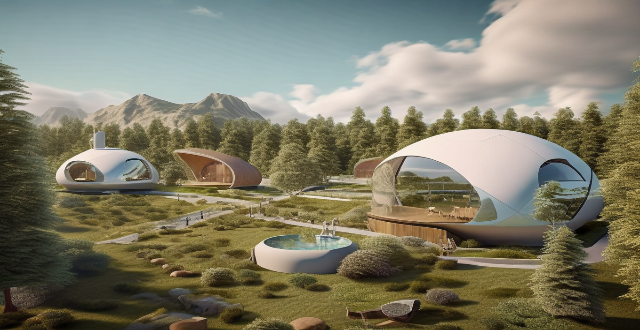Ecological design is a crucial approach to enhancing biodiversity and supporting conservation efforts. It integrates principles of ecology and sustainability into the built environment, aiming to minimize negative impacts on natural ecosystems while promoting their health and resilience. Ecological design contributes to these vital efforts by minimizing habitat destruction, promoting ecosystem services, enhancing connectivity, supporting conservation efforts, and implementing best practices. By integrating ecological principles into the built environment, we can create spaces that coexist harmoniously with nature, contributing to a future where both humanity and wildlife thrive.

Ecological Design: A Catalyst for Biodiversity and Conservation
Ecological design plays a crucial role in enhancing biodiversity and supporting conservation efforts. This approach to design integrates principles of ecology and sustainability into the built environment, aiming to minimize negative impacts on natural ecosystems while promoting their health and resilience. In this detailed response, we will explore how ecological design contributes to these vital efforts.
Minimizing Habitat Destruction
One of the most significant threats to biodiversity is habitat destruction. Ecological design helps mitigate this issue by:
- Reducing Land Use: By optimizing space and using land efficiently, ecological design reduces the need for new construction projects that could lead to habitat loss.
- Preserving Natural Features: Incorporating existing vegetation, topography, and water bodies into designs helps maintain the integrity of ecosystems.
- Avoiding Fragmentation: Careful planning ensures that development does not fragment habitats, allowing species to move freely and maintain genetic diversity.
Promoting Ecosystem Services
Ecosystem services are benefits provided by nature, such as pollination, water purification, and climate regulation. Ecological design supports these services by:
- Increasing Green Spaces: Including parks, gardens, and green roofs in urban areas provides habitats for wildlife and helps regulate temperatures.
- Enhancing Soil Health: Using native plants and permeable surfaces promotes healthy soil ecosystems, which are essential for nutrient cycling and water filtration.
- Promoting Biodiversity: Designing with a variety of plant species attracts diverse animal life, fostering complex food webs and resilience against pests and diseases.
Enhancing Connectivity
Connectivity between habitats is vital for species migration and gene flow. Ecological design improves connectivity through:
- Creating Corridors: Designing landscapes with corridors, such as hedgerows or green bridges, allows animals to safely traverse human-dominated areas.
- Restoring Riverine Habitats: Restoring riparian zones along rivers provides critical habitats and movement pathways for aquatic and terrestrial species alike.
- Linking Conservation Areas: Planning developments to connect protected areas or establishing stepping stone habitats can create networks of conservation sites.
Supporting Conservation Efforts
Ecological design directly supports conservation initiatives by:
- Raising Awareness: Well-designed public spaces can educate people about local ecology and conservation issues, fostering stewardship and advocacy.
- Providing Research Opportunities: Inclusive designs may incorporate research stations or observation areas where scientists can study biodiversity and ecosystem function.
- Facilitating Adaptation: As climate change progresses, ecological design can help create spaces where species can adapt, such as microclimates within urban environments.
Implementing Best Practices
To effectively implement ecological design principles, professionals should consider best practices like:
- Conducting Environmental Impact Assessments (EIAs): Before any project begins, an EIA helps identify potential impacts on biodiversity and suggests ways to mitigate them.
- Using Low-Impact Construction Methods: Building techniques that minimize disturbance to surrounding ecosystems are essential during construction phases.
- Collaborating with Stakeholders: Engaging local communities, conservationists, and other stakeholders ensures that designs align with broader conservation goals.
In conclusion, ecological design offers a powerful toolkit for enhancing biodiversity and supporting conservation efforts. By integrating ecological principles into the built environment, we can create spaces that coexist harmoniously with nature, contributing to a future where both humanity and wildlife thrive.